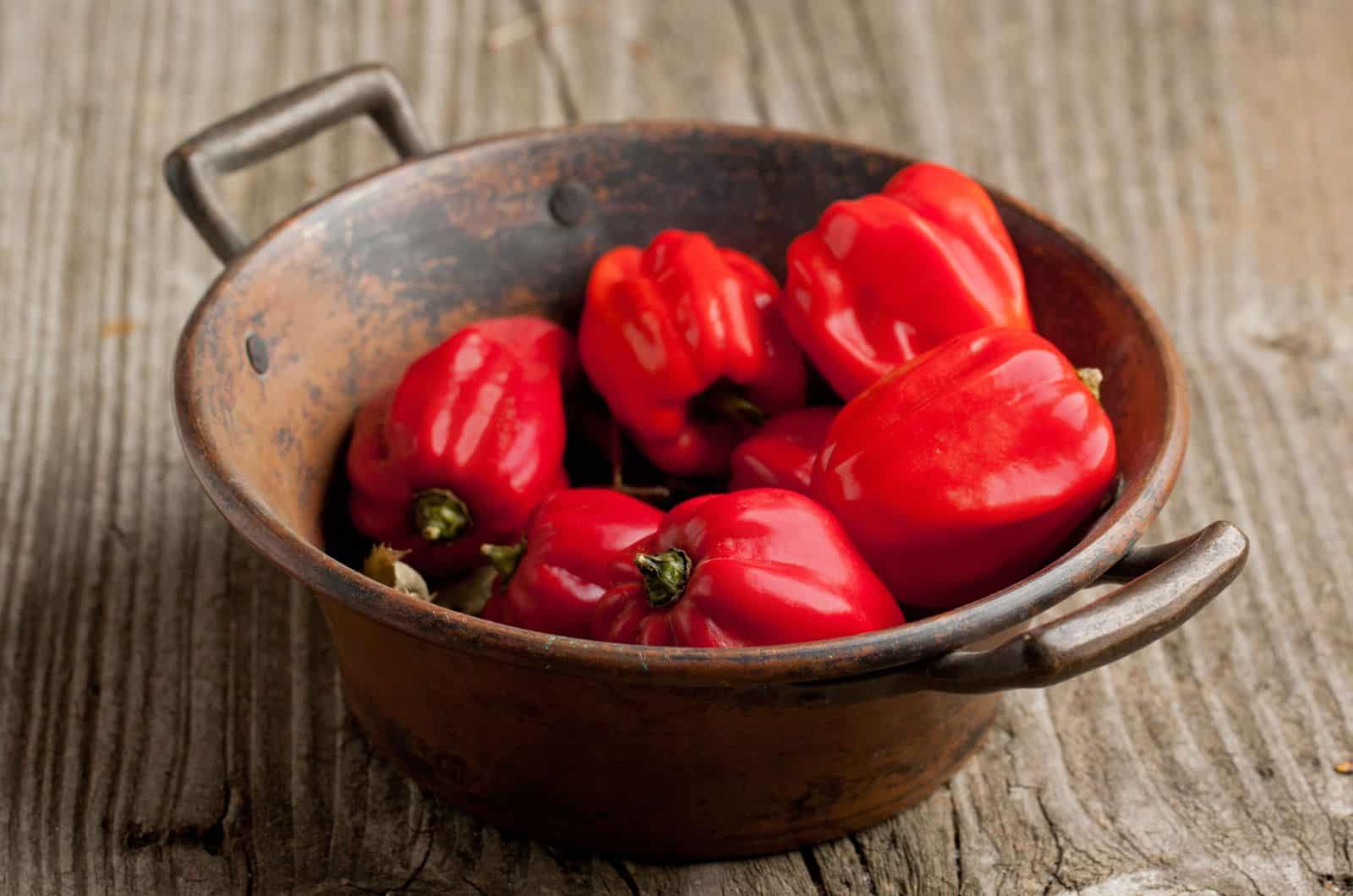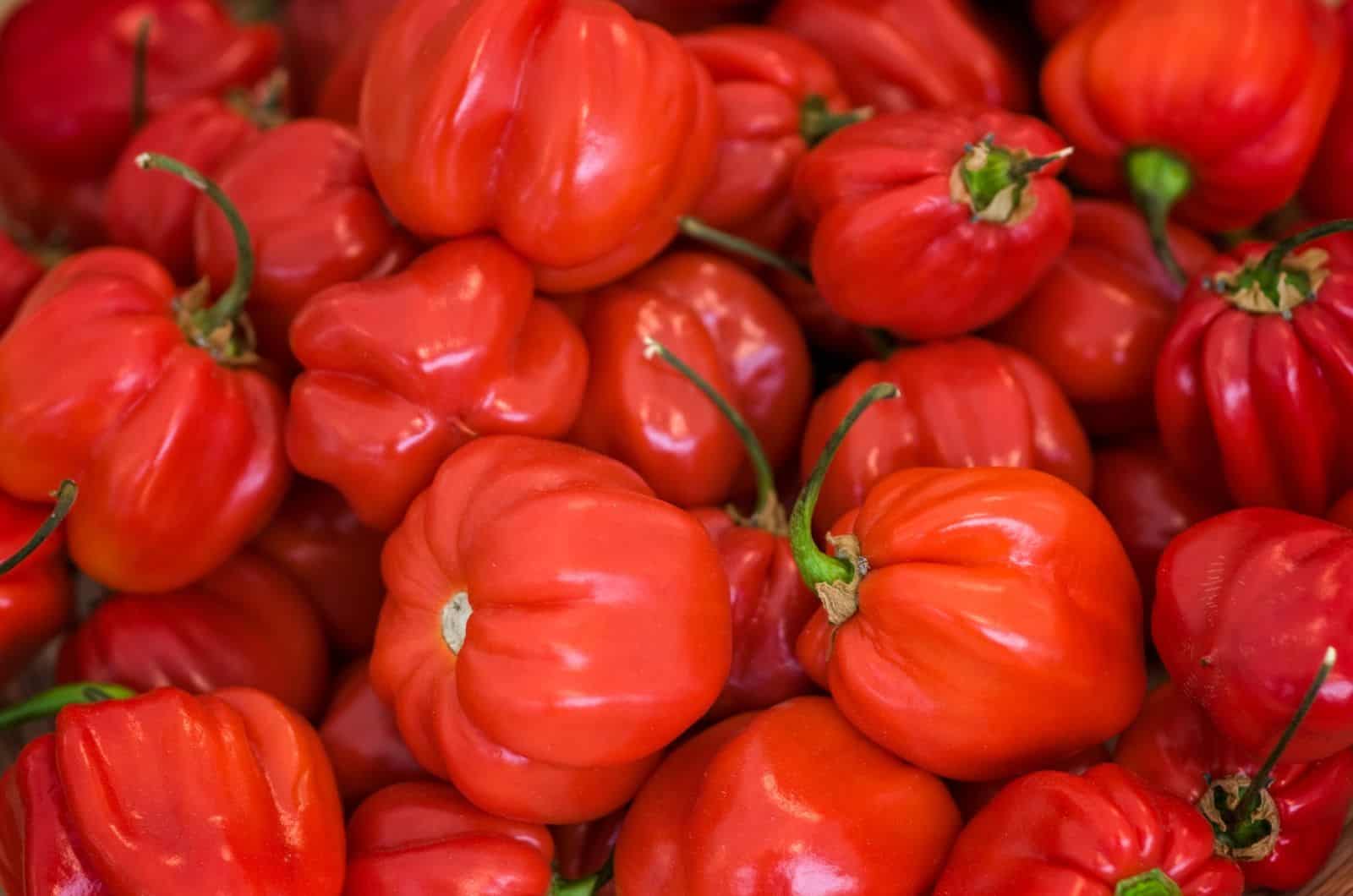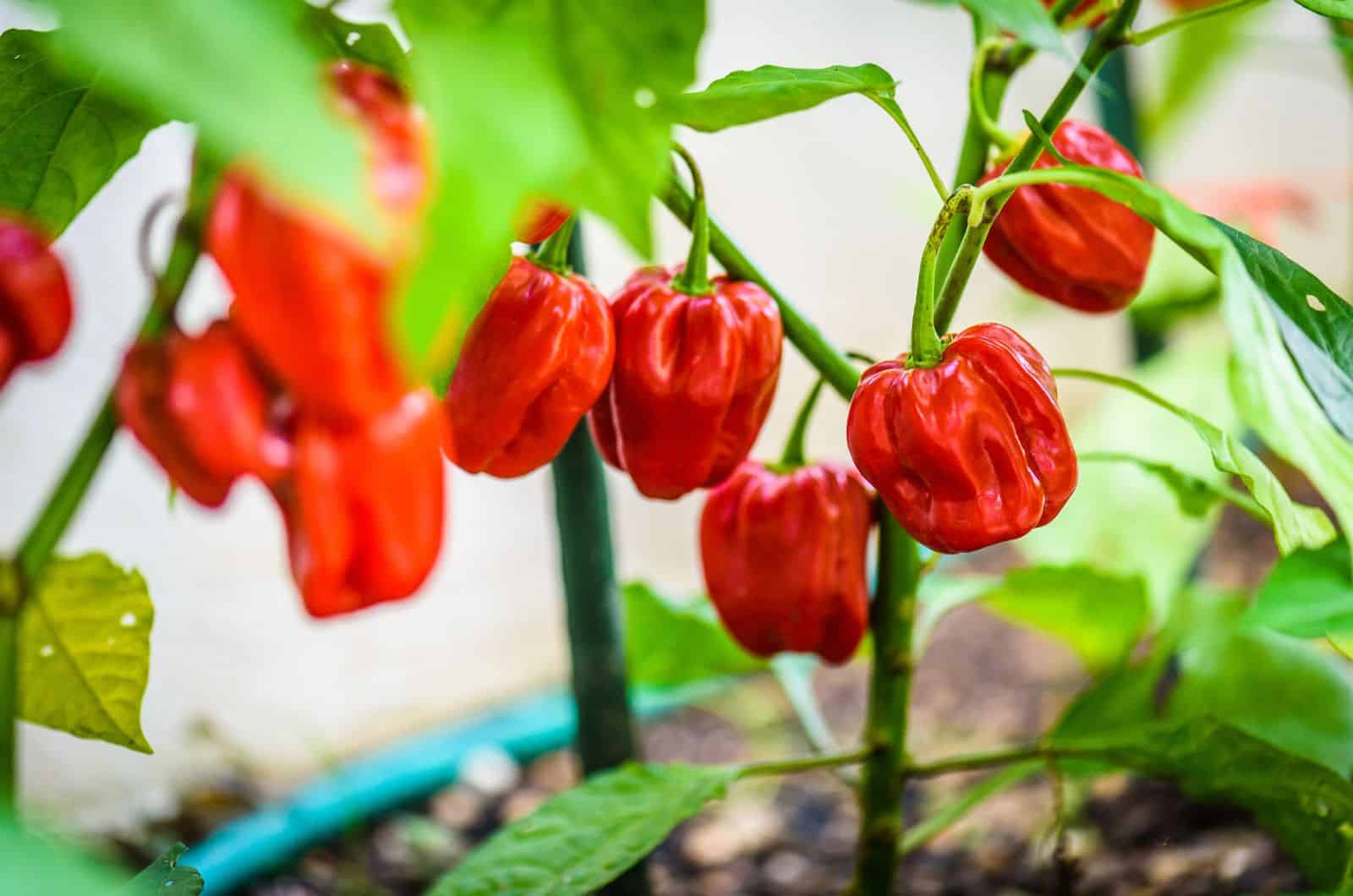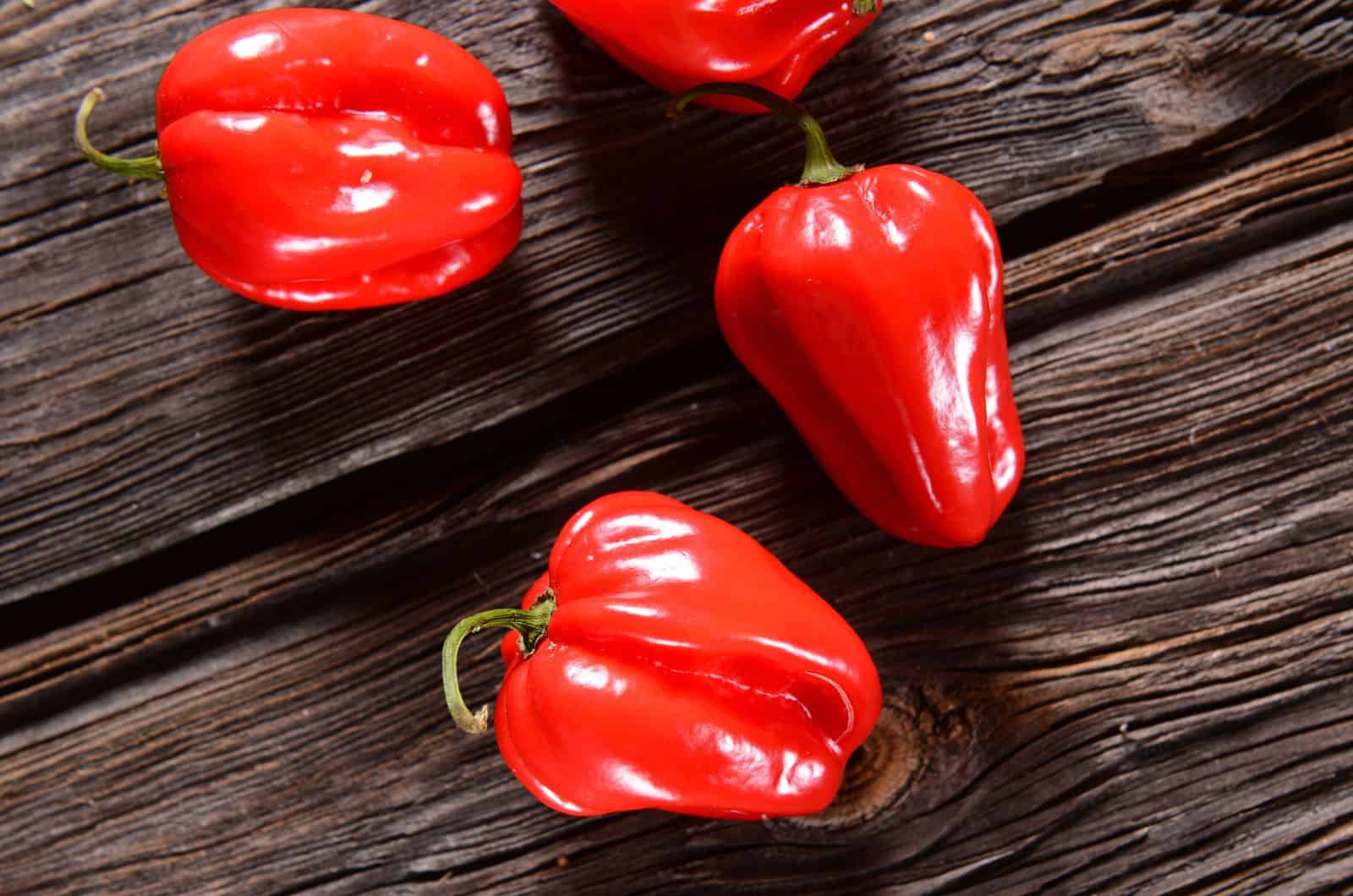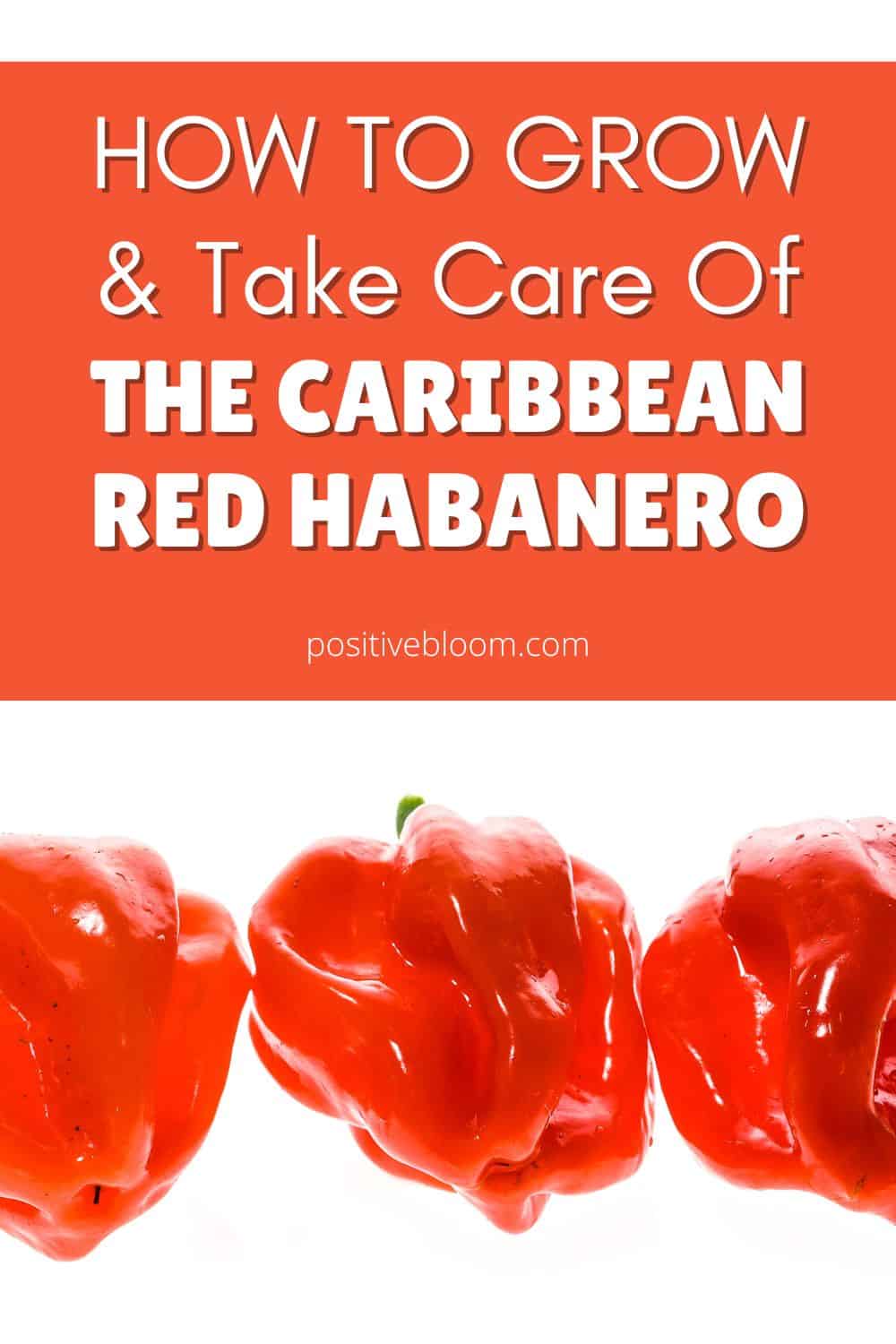Here is one of the tastiest chili pepper plants for all of you spice lovers out there!
The Caribbean Red habanero pepper, also known as Capsicum chinense, is a very hot pepper plant according to the Habanero Scoville rating — it has almost 475,000 SHU (Scoville heat units).
Therefore, this is not a common hot pepper that you can find in local supermarkets. If you are a true spice junkie, I would suggest you buy heirloom habanero seeds and grow your own chile peppers.
Keep reading to learn how to spice up your garden with this super hot chili, and don’t worry, it is quite easy to grow!
Caribbean Red Habanero: Common Features
Habanero peppers are known as one of the hottest peppers in the world — the Red Savina habanero was proclaimed to be the hottest chili by the Guinness World Record book. However, this title was stolen by Bhut Jolokia in 2007, which is now the fourth pepper on the Scoville rating list.
Since then, several other spicy peppers have replaced the habanero’s fame, but that doesn’t mean that habanero varieties aren’t spicy. After eating even one habanero pepper, you could require a fire extinguisher, I assure you!
Currently, the hottest pepper in the world is the Carolina Reaper, which has 2,200,000 SHU!
Origin
The origin of this flaming hot pepper is most likely the Yucatan peninsula, which is located near the southernmost point of Mexico, and it separates the Gulf of Mexico from the Caribbean Sea. So, how did they end up in the Caribbean?
Well, birds most likely spread their seeds all over the islands, especially Haiti and Cuba.
Nowadays, these plants are commonly grown in Mexico and North America.
Appearance
These pepper plants have bushy appearances. They produce a short and strong trunk that can later support those hot peppers. Their foliage has a bright green color, and it’s relatively small. The plant can grow up to 3 feet tall, so it won’t take up a lot of space in the garden.
Once they start blooming, you will see beautiful white, yellow, pink, or light green flowers all over the plant. These chili flowers will get pollinated and transform into small green peppers.
These green peppers are still unripe — I mean, they don’t have the word “red” in their name for no reason; it’s because these peppers have a bright red color once they mature!
Taste
Due to the smoky flavor of this Mexican pepper, it is frequently used to spice up food and create delicious salsas.
A salsa produced from a Caribbean red habanero truly stands out because of its distinct citrusy flavor.
Use
Of course, this habanero is used to make lots of spicy foods!
They are primarily used to make hot sauces — they just add that specific citrusy flavor that makes everything yummier. Trust me, you get a pleasant citrusy surprise after the burning sensation in your mouth!
You can also use them to make delicious marinades or salsas, but the star of the show is definitely habanero jam, which is sweet and spicy at the same time. I tried making one with an orange habanero, and it was truly remarkable!
How To Plant And Grow The Caribbean Red Habanero
If you were wondering where to buy the Caribbean Red habanero, how about you try growing it in your garden instead? This way, you will have lots of fresh peppers whenever you want!
You can get these garden seeds online — they are always in stock on Amazon!
How To Sow Habanero Seeds
The first chilli plant growing stage is seed germination. In order for seeds to germinate, the soil should be warmed up first to around 70 degrees Fahrenheit, which is the ideal germination temperature.
This is why we often start the seeds indoors a few weeks before the last frost date, and then transplant the little seedlings once the danger of frost has passed.
Caribbean red habanero seeds germinate in the first week, and you can use a heat mat to boost the germination process. Soon enough, you will be able to see little sprouts coming out of the soil.
Now, let’s learn how to take care of these hot baby plants!
How To Take Care Of The Caribbean Red Habanero
We already know that these plants grow best in Northern climates. The ideal temperatures for these peppers are from 65 to 80 degrees Fahrenheit.
Water these plants thoroughly and deeply. Avoid overwatering as it can ruin your peppers’ delicious flavor — they will be bitter instead.
Less water can result in hotter peppers, but there is a possibility that the plant might dry out.
The best course of action would be to water them twice a week initially, then once a week after they start to produce fruit.
These plants need around 6 hours of sunlight throughout the day, so make sure to plant them in the sunny part of your garden!
When it comes to fertilizing, they like nitrogen-containing fertilizers at the beginning of growth; then, you should switch to ones that contain more potassium and phosphorus. You should fertilize them once a month during the growing season.
Avoid overfertilizing because it might cause chemical buildup in the soil, which can harm your pepper plant’s roots and overall health.
To Sum Up
If you are into spicy foods, then you should definitely checkout the Caribbean Red habanero pepper. Although it might be hard to get hold of this pepper at the supermarket, you can always order the seeds online.
Even if you don’t have a vegetable garden, growing chili peppers in pots on the balcony has become quite popular these days.
Spice it up!
Until next time!
Like this post? Share or pin it for later!

